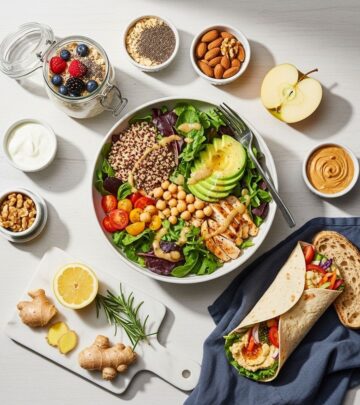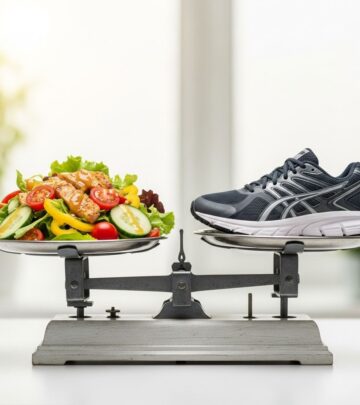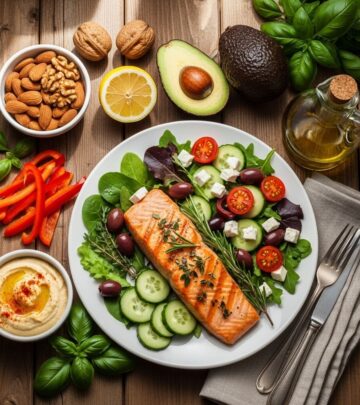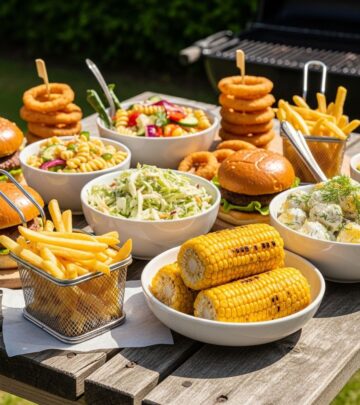Best Foods to Eat After Too Much Sodium: How to Rebalance Your Diet
Feeling bloated after a salty meal? Discover the top foods, strategies, and expert tips to help your body recover when you've had excess sodium.
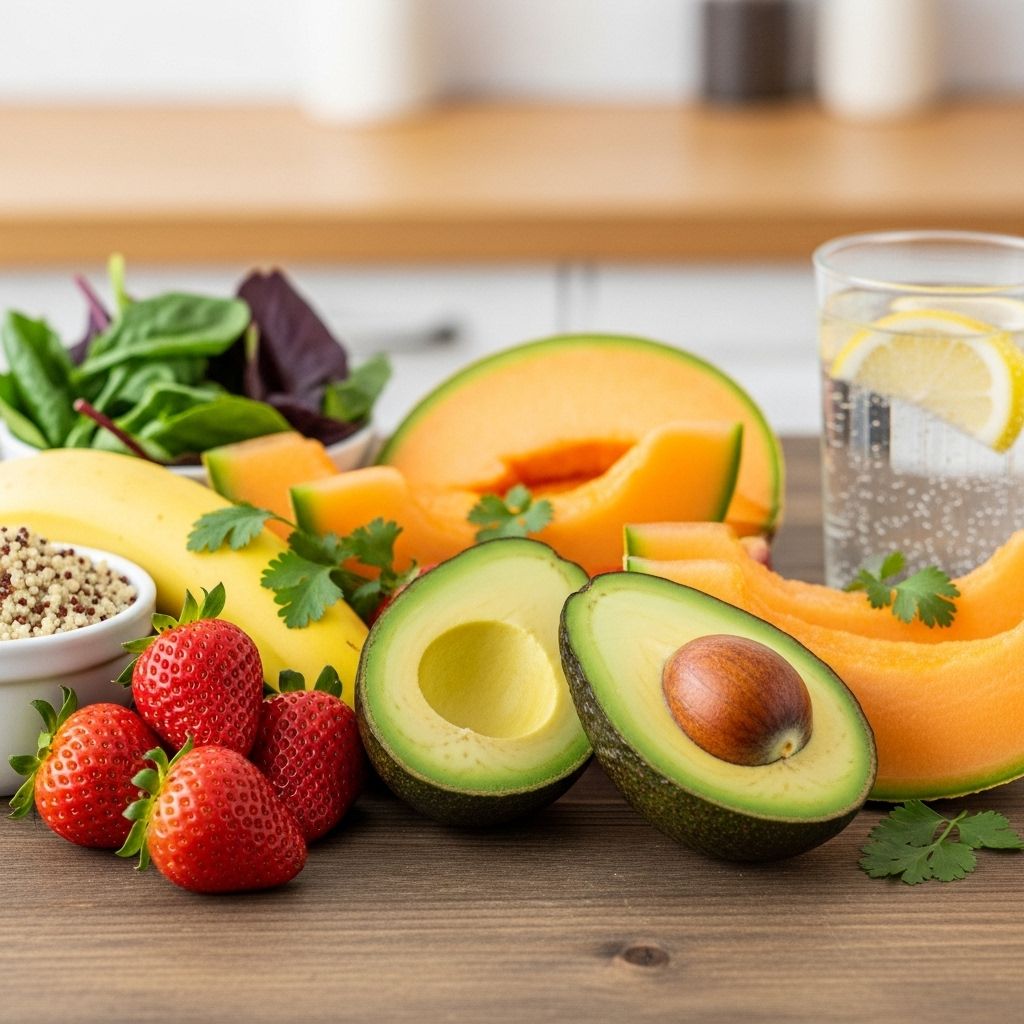
Foods to Eat After Consuming Too Much Sodium: Essential Tips for Rebalancing
It’s easy to consume more sodium than recommended, whether it’s through packaged foods, restaurant meals, or processed snacks. The average adult in the U.S. takes in about 3,400mg of sodium daily, substantially above the advised maximum of 2,300mg . If you’ve recently had a salty meal and feel bloated, thirsty, or sluggish, choosing the right foods and fluids can help your body recover and restore balance.
Why Excess Sodium Matters
Sodium is an essential mineral for regulating fluids, maintaining blood pressure, and supporting nerve function. However, too much sodium can trigger:
- Bloating and water retention
- Increased blood pressure
- Intense thirst
- Headaches and fatigue
A high-sodium day doesn’t have to derail your health. With strategic dietary choices, it’s possible to mitigate negative effects and get back on track.
Immediate Steps After a Salty Meal
Below are key actions recommended by nutrition experts to help your body recover:
- Hydrate generously. Water helps flush out excess sodium and reduces symptoms like bloating and thirst .
- Eat potassium-rich foods. Potassium counteracts sodium’s effect on blood pressure and fluid retention .
- Choose high-fiber, antioxidant-rich fruits and vegetables. These foods aid hydration and replenish vital nutrients .
- Avoid additional salt. Skip salt shakers and high-sodium condiments for the next 24 hours .
How Long Does Excess Sodium Affect the Body?
After a high-sodium meal, your body works quickly to restore balance. Sodium raises the blood’s osmolality, triggering thirst and water retention. Depending on hydration and kidney function, your body can process surplus sodium in several hours to a day . Help speed recovery by drinking extra water, eating potassium-rich foods, and avoiding additional sodium sources.
Top Hydrating Foods to Beat Bloating
Hydration is critical after excessive sodium intake. Apart from drinking plain water, try these whole foods for an extra hydration boost:
- Cucumbers: Composed of over 95% water. Low in sodium and refreshing.
- Watermelon: High water content and a natural source of potassium.
- Celery: Ideal snack for hydration with low calories.
- Tomatoes: Rich in water and antioxidants.
- Lettuce: Especially iceberg and romaine varieties, which hydrate without adding salt.
- Berries (strawberries, blueberries, raspberries): High in water, vitamins, and fiber.
- Oranges and Grapefruit: Packed with water, vitamin C, and potassium.
Pair these foods with increased fluid intake to help your kidneys eliminate excess sodium efficiently.
Potassium-Packed Foods to Restore Electrolyte Balance
Eating foods rich in potassium can help counteract the blood-pressure-increasing impact of sodium . Potassium supports heart health and assists the body in flushing out sodium through urine. Try incorporating these foods:
- Bananas: A classic source of potassium, perfect as a snack or breakfast addition.
- Avocados: Rich in potassium and healthy fats to help regulate sodium balance.
- Sweet Potatoes: Loaded with potassium and fiber, great for main or side dishes.
- Spinach and Leafy Greens: Dark greens like spinach, kale, and Swiss chard have significant potassium content .
- Beans and Lentils: High potassium, low sodium, and packed with fiber and protein.
- Melons (especially cantaloupe and honeydew): Hydrating and potassium-rich.
Focus on fresh or cooked-from-scratch versions to keep sodium levels low.
Foods to Avoid After High Sodium Intake
If you’ve recently consumed more sodium than recommended, give these foods a miss for the next day:
- Processed meats: Bacon, ham, sausage, and deli meats contain high levels of sodium and preservatives .
- Canned soups and broths: Often very salty; opt for homemade or low-sodium versions .
- Frozen meals and pizza: Industrially prepared foods contain large amounts of sodium .
- Condiments and sauces: Soy sauce, ketchup, salad dressings, and marinades can sabotage efforts to cut sodium .
- Snack foods: Chips, pretzels, crackers, and microwave popcorn are usually salt-heavy .
Review product labels for sodium content and choose alternatives when possible.
Low-Sodium Alternatives & Smart Food Swaps
| High-Sodium Food | Low-Sodium Swap |
|---|---|
| Regular canned vegetables | Fresh or frozen vegetables without added sauces |
| Ramen noodles, canned soup | Homemade soup, low-sodium canned options |
| Bacon, ham, deli meats | Grilled chicken breast, fish, homemade lean roasted meats |
| Salty chips, popcorn, crackers | Low-sodium snacks, plain popcorn, unsalted nuts |
| Breads and rolls | Whole grains: brown rice, quinoa, farro |
| Pasta sauces & salsa | Fresh tomato sauce, homemade salsa |
| Bottled salad dressing | Lemon juice, olive oil, vinegar with herbs |
| Salted butter or margarine | Unsalted butter, avocado, or olive oil |
| Cheese (Feta, Blue) | Goat cheese, ricotta, or small amounts of grated Parmesan |
| White flour tortillas | Whole-grain corn tortillas |
Meal Ideas When Recovering from High Sodium
Designing meals around fresh, whole foods ensures maximum nutrition and minimal sodium. Here are simple, delicious options:
- Breakfast: Oatmeal cooked with water and topped with bananas, berries, and a sprinkle of cinnamon.
- Lunch: Mixed green salad with spinach, kale, cucumbers, tomatoes, avocado, grilled chicken, and olive oil-lemon dressing.
- Snack: Fresh fruit (melon, berries), raw veggies (bell peppers, celery), or unsalted nuts.
- Dinner: Baked sweet potato, roasted salmon (herb-seasoned, no added salt), steamed broccoli, and brown rice.
- Beverage: Water, herbal teas, or coconut water for electrolyte balance.
Tips to Prevent Sodium Overload in the Future
While it’s easy to slip up occasionally, adopting these strategies will help you keep sodium intake in check.
- Cook at home more often. You control ingredient choices and sodium levels .
- Read nutrition labels. Look for products marked ‘low sodium’ or ‘no salt added.’ Aim for less than 140mg of sodium per serving.
- Flavor foods with herbs and spices. Use basil, oregano, rosemary, lemon juice, garlic, and pepper, instead of salt .
- Limit processed foods. These are the largest source of hidden sodium in the American diet .
- Choose unsalted nuts, seeds, and preservative-free snacks.
- Be wary of restaurant meals. Ask for sauces, dressings, and cheese on the side. Request low-sodium options.
- Watch for ‘hidden’ sodium. Foods like bread, cereal, and canned veggies can be surprisingly salty .
Supporting Your Body Beyond Food
Although food choices are critical, a few additional lifestyle tips can help your body restore balance:
- Gentle exercise: Walking, yoga, or stretching can help reduce bloating and encourage fluid balance.
- Get adequate sleep: Rest supports kidney function and recovery.
- Monitor blood pressure: Track your readings if you’re sensitive to sodium or have hypertension.
Frequently Asked Questions
Q: How do I know if I’ve eaten too much sodium?
Common signs include increased thirst, bloating, swelling in hands or feet, headaches, and elevated blood pressure. Reading food labels and tracking intake can help you stay informed .
Q: How long does it take the body to recover from high sodium intake?
In healthy individuals, excess sodium may be flushed out over several hours to a day through urination, especially when drinking plenty of water and eating potassium-rich foods .
Q: Are there supplements that can help?
No supplements can instantly counteract sodium overload. Focus on natural food sources of potassium and magnesium like fruits, vegetables, nuts, and whole grains .
Q: Can exercise help flush out sodium?
Light exercise can support fluid movement and kidney function, but intense workouts may increase sodium loss via sweat—important to hydrate appropriately.
Q: Should I avoid all salt after a high-sodium meal?
It’s wise to avoid additional salt or salty foods for the next day to help restore balance. Use herbs, citrus, vinegar, and spices to flavor meals while recovering.
Conclusion: Regain Balance After Excess Sodium
Mistakes happen, but with knowledge and smart choices, you can support your body’s natural recovery process after too much sodium. Prioritize water, potassium-rich foods, and fresh produce, limit further sodium intake, and employ flavor-boosting herbs and spices to feel your best. Tuning into your body’s signals and making proactive adjustments is key to maintaining optimal health amidst occasional indulgences.
References
- https://www.heart.org/en/healthy-living/healthy-eating/eat-smart/sodium/how-to-reduce-sodium
- https://www.ucsfhealth.org/education/guidelines-for-a-low-sodium-diet
- https://www.nhlbi.nih.gov/news/2023/halt-salt-5-ways-cut-down-sodium-and-improve-your-heart-health
- https://www.youtube.com/watch?v=6V8ZsvHfxkw
- https://www.health.harvard.edu/blog/10-tricks-to-reduce-salt-sodium-in-your-diet-2018072014281
- https://patient.uwhealth.org/healthfacts/180
- https://www.mayoclinic.org/healthy-lifestyle/nutrition-and-healthy-eating/in-depth/sodium/art-20045479
- https://myhealth.alberta.ca/Health/aftercareinformation/pages/conditions.aspx?hwid=ud1317
Read full bio of Sneha Tete


